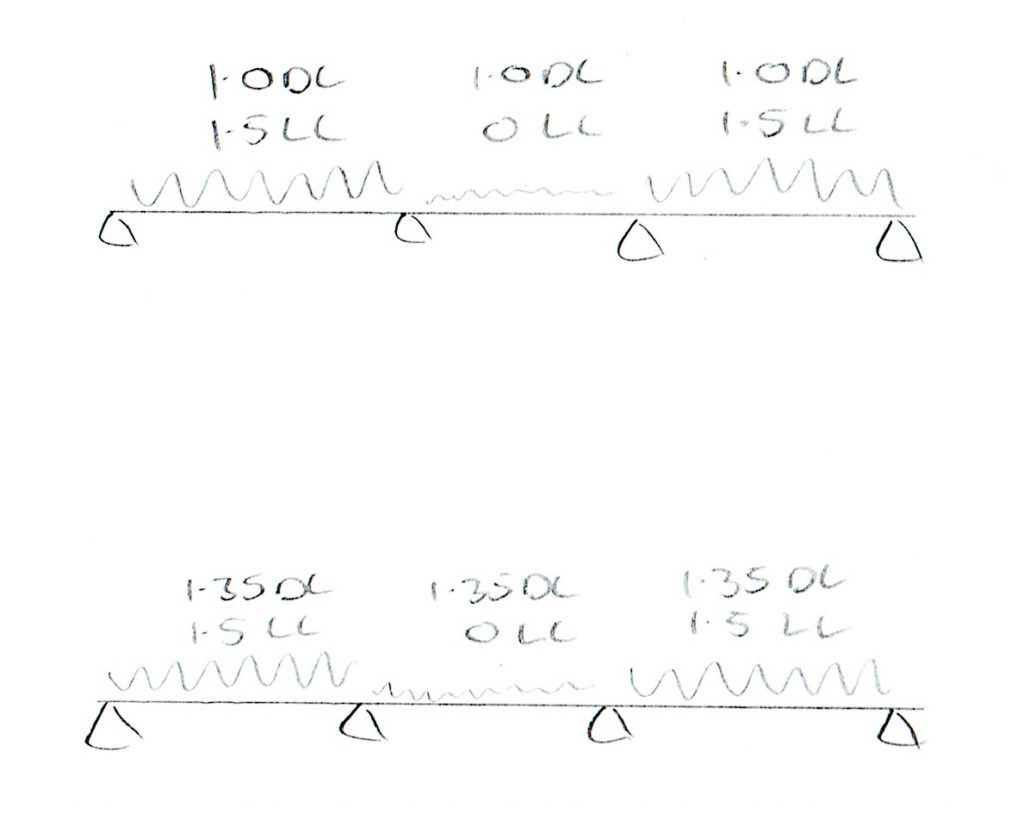I tried googling ‘How to open DesignCenter’ for AutoCAD and got nothing.
So if you are asking the same question, here is the answer:
CTRL + 2
More useful shortcuts for AutoCAD can be found here.
Have a nice day!
I tried googling ‘How to open DesignCenter’ for AutoCAD and got nothing.
So if you are asking the same question, here is the answer:
CTRL + 2
More useful shortcuts for AutoCAD can be found here.
Have a nice day!
When designing structures, the critical design case can arise when high levels of load are applied to one area while low levels of load are applied to another. Applying varying levels of load to structures to try and find a worst case is often referred to as pattern loading.
In British Standards, pattern loading could be done by splitting the dead and live loads into their minimum and maximum factors of safety.

In Eurocodes, it’s not quite as simple.
Firstly, there are several checks that are typically done. The two relevant in this post are EQU and STR. With EQU, we are checking that the structure as a whole is stable and in equilibrium. In STR, we are checking the performance of the structural elements. The method for patterning is different for each.
The methods for each are described in EN 1990. The values given below are also taken from this document. Your country may have supplementary guidance and values in its National Annex.
When checking for static equilibrium, both the dead load (permament actions) and live load (variable actions) may be patterned.
Note that the partial factors are different from the STR values you will be more used to using.
In the cantilever below, the beam is resting upon supports. An EQU check with onerous load patterning may show that the cantilever will overturn. To be stable, the cantilever would either need to be shorter, or the beam would need to be tied down at the left hand side.

Ref: Table A1.2(A) of EC0
When checking the resistance of structural elements, only the live load is patterned.
What about the dead load? We can choose the worst partial factor of 1 or 1.35, but we must use the same partial factor for permament actions on our entire structure. This is as described in Note 3 of Table A1.2(B).
If it is obvious whether the lower or higher value will be onerous, then you only need to check this value. If it is not obvious, then you will need to check your structure with both values.

Ref: Table A1.2(B) of EC0
In clauses 3.3 (4) and 6.4.1 (1) of EC0, we are told that we must verify both STR and EQU (and other ultimate limit states) ‘where relevant’.
In practice, many situations are obviously going to be stable under EQU, such as a simply supported beam. Here, I would say that EQU is not relevant, and we can move straight on to STR.
When might we design under EQU conditions? In the cantilever above, let’s say that EQU shows that a vertical tie is needed on the left support. If the uplift on this support is greater under EQU than STR, I would use the uplift under EQU as the design effect to be resisted when designing the tie.
Many thanks to Bob Benton for clearing this up for me, while I was on the 2017 EC2 course organised by the IStructE Western Counties Regional Group.